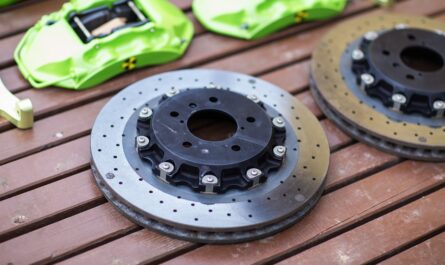The Rise of Online Car Shopping
With the growth of the internet, researching and buying a car online has become increasingly popular. More people are turning to websites and apps to search vehicle inventories, get price quotes, apply for financing, and complete purchases entirely from their phones and computers. According to a survey by Cox Automotive, over half of car shoppers begin their search online and many complete part or all of the purchase remotely rather than visiting a traditional dealership. The convenience and control that online car buying provides has helped boost its popularity.
Researching Makes and Models
The internet provides car buyers with an immense amount of information at their fingertips. Websites like Edmunds, Kelley Blue Book and Consumer Reports offer in-depth reviews on different vehicles, detailing specs, features, reliability ratings, safety scores, fuel economy and more. Buyers can easily research and compare dozens of makes and models side by side to narrow down what best fits their needs and budget. Professional reviews are supplemented by discussions on owner forums where current drivers share real-world experiences and recommendations. Armed with this research, buyers enter the shopping process well informed.
Browsing Inventory and Getting Price Quotes for Online Car Buying .Once a few top choices have been selected, it’s time to look for available vehicles. Many dealer websites feature searchable new and used car inventories that can be filtered by location, price, mileage, trim, color and options. Integrated inventory viewing tools on sites like Cars.com, Autotrader.com and TrueCar.com allow searching multiple nearby dealerships at once. Buyers can check if a desired vehicle is in stock or has to be ordered. They can also get price quote tools to see what others paid or current offers to help negotiate the lowest deal. This level of instant access saves hours of visiting different lots.
Applying for Financing
To make the online process as seamless as possible, many websites integrated financing into the car shopping experience. After selecting a vehicle, buyers can get prequalified for a loan right on the page by providing basic application details. Popular lenders like Chase, Capital One, Wells Fargo and credit unions electronically submit buyers to multiple financial institutions to find the lowest rates. Pre-approvals allow shoppers to know their estimated monthly payments before even speaking to a dealer salesperson. Securing funds ahead of time strengthens their position for negotiation.
Completing the Purchase
Depending on location and dealer preference, some websites allow completing an entire purchase without ever visiting the lot. Buyers can select their desired car online, work through all the numbers remotely and even sign contracts digitally to take delivery of their new vehicle. For major transactions like this, video conferencing through services like Apple FaceTime can connect the customer online with dealer staff to review paperwork in real time. Signatures are collected electronically. After finalizing details, the car is delivered to the buyer’s chosen address or made available for pickup from the dealership. This full online process provides a safe, convenient purchase experience.
The Convenience of Online Delivery and Service
While shopping online removes many steps from the traditional dealership routine, it does not eliminate the need for test drives, inspections or delivery entirely. When completing an out-of-state purchase remotely, many buyers opt to have the vehicle transported to their location. Licensed transport carriers coordinate logistics with selling and receiving dealers to drive the car to its new home. This delivery service bridges the gap for buyers who cannot pick up locally. Additionally, websites integrate dealer service scheduling directly into the buying process for beyond-sale maintenance needs. Customers can quickly book oil changes, repairs or recalls without fussing with phone calls. Online platforms connect buyers with their vehicles throughout ownership.
Transitioning Traditional Dealerships
While online car buying growth surged in recent years, the majority of sales still happen in brick-and-mortar dealerships. However, conventional lots are adapting their operations to stay competitive. Many offer inventory browsing, price quotes, preapprovals and partial documentation on their websites to let customers take the first steps from home. Buyers can start the process remotely before visiting in-person to complete the deal. Additionally, onboard tablets in showrooms allow sales staff to seamlessly pull up online shopping carts for customers. Dealers who recognize changing buyer preferences and leverage digital technology to enhance traditional sales are poised to appeal to both in-store and online shoppers.
Blending Digital and Traditional Car Purchasing
As online car buying continue evolving alongside customer demand, the ideal future model appears to be a blend of digital convenience with personal touchpoints. While some buyers genuinely prefer completing big-ticket items entirely online, most still like aspects of physically seeing vehicles and interacting with staff during parts of the process. The perfect system provides multiple access points across digital and traditional channels. Shoppers can research, quote, test drive locally, get paperwork approved online and come back to sign, all at their schedule and comfort level. Dealerships embracing hybrid modalities will be best poised to meet evolving consumer needs while retaining satisfied client relationships. With advancements in technology, the car shopping experience will remain in active transition. Dealers open to adaptation will have the advantage as habits shift.




